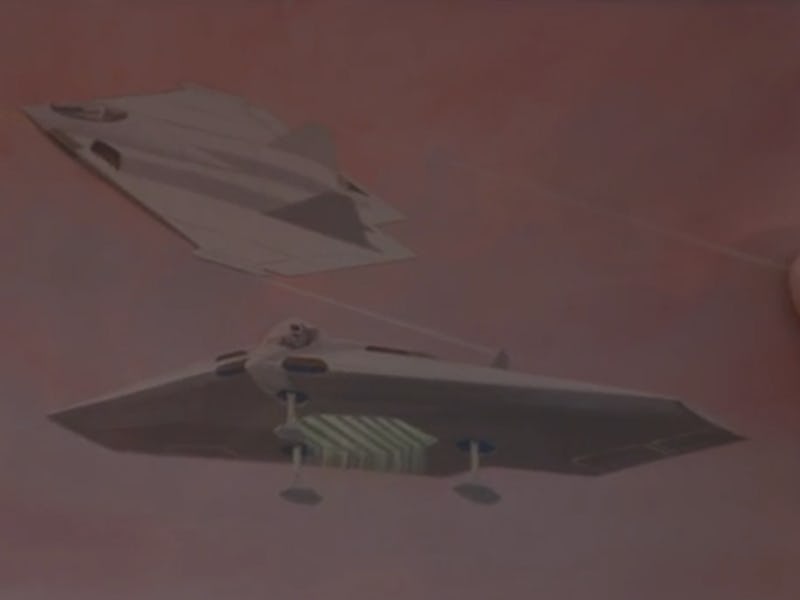If Project Greenglow Worked, Engineers Would Have Built a Flying Saucer
Our UFO dreams will have to wait.

Project Greenglow was born when a British engineer named Ronald Evans, employed at aerospace company BAE Systems, somehow remained employed after he declared he wanted to defeat gravity.
The BBC’s Horizon recently dove into the history of the quirky yet controversial program and its objective to create a device that didn’t overcome the Earth’s gravity conventionally — no rocket fuel in, acceleration out — but instead create a system that could fling us farther into space for cheap.
If Project Greenglow worked, engineers would have built the perfect flying saucer.
In this fertile mind-field, three big ideas took root. None of them worked, thanks to what we know about physics, but if you wanted to build a flying saucer today you can look to them for what to rule out:
Project Greenglow
Greenglow earned its name thanks to concept art, of ships hovering in the sky spewing a greenish glow, natch. From the point of view of conceptualism, this project actually worked. From the point of view of “success” — well, Greenglow didn’t find much. Evans wrote in 2005, at the time he retired, “Although it is true that we made advances in our understanding, leading to new experiments, it is also a fact that no major breakthroughs were made.”
Eugene Podkletnov’s gravity shield
About the time that Greenglow was underway, in the 1990s, a Russian materials scientist named Eugene Podkletnov said he was able to block gravity using superconductors and electromagnetism. It’s not anti-gravity as we would normally think — rather, as Podkletnov told Wired in its 1998 story, it’s akin to the relationship between a transistor and electricity.
The discovery came when Podkletnov spied smoke floating strangely over a ceramic superconductor; when he put a silicon above the disc it also appeared to weigh less. (If you’ve seen the time-travel indie Primer, the device being built at the beginning of the film resembles Podkletnov’s ideas.)
Despite the alluring premise — if you could warp gravity, time travel would be revolutionized — no one has been able to replicate Podkletnov’s work. NASA spent years and more than half a million dollars trying. The agency ultimately failed.
Roger Shawyer’s EmDrive
The last of the Cerberus heads in Project Greenglow is the EmDrive. Rather than alter the rules of gravity, the EmDrive changes the acceleration game. See, the EmDrive is a “reactionless” drive. The operational idea is that there’s no exchange of fuel into kinetic energy — it’s as if the only thing you needed to do to make a bike move was to sit on the seat, and it would cart you around the world forever.
If the EmDrive worked, it could get us to Pluto in 18 months (compared to the 9 to 12 years it currently takes for our space probes to get to the dwarf planet). EmDrive is built on the idea that if you zap a hollow cone with microwaves, the resulting radiation pressure gradient inside the container will provide electromagnetic thrust. It works “using microwave technology to achieve direct conversion of d.c. power to thrust without the need for propellant,” Shawyer wrote in a paper he sent to New Scientist.
The rub? It violates our understanding of physics, specifically the ones that conserve energy and momentum. Just to be sure, NASA, which is apparently loathe to leave any impossible engines unexamined, tried to make a warp cone. No dice.